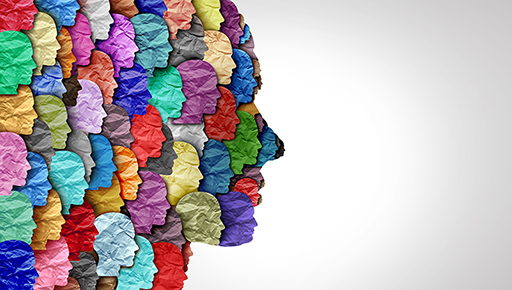1.1 Different diversity characteristics
Some of the most commonly discussed diversity characteristics are protected by law through the Equality Act, 2010. Known as protected characteristics in the UK, they are:
- age
- gender reassignment
- being married or in a civil partnership
- being pregnant or on maternity leave
- disability
- race including colour, nationality, ethnic or national origin
- religion or belief
- sex
- sexual orientation.
You’ll explore them in more detail in Weeks 2 and 3.
But these are not the only aspects of diversity that need consideration in the workplace. Later in the course you’ll also explore the influence of social capital.
One useful way to break the concept of diversity down is to consider inherent versus acquired, or cognitive, diversity. Another way to look at this might be to think of it as the impact of nature versus nurture.
Hewlett et al (2013) describe inherent diversity as involving ‘traits you are born with, such as gender, ethnicity, and sexual orientation’, (i.e. nature) whereas acquired diversity ‘involves traits you gain from experience’ such as education or living/working in a country other than your own (i.e. nurture). When both types are present within an individual, Hewlett et al refer to this as 2D diversity.
Activity 1 Exploring acquired diversity
Spend a few minutes thinking about what factors might be included in Hewlett’s acquired diversity category, sometimes also known as cognitive diversity, i.e. traits you gain from experience. If it helps – think about yourself and the ways in which you differ from those around you – for example, did you have a different educational experience?
Comment
There are many potential options to choose from. For example, you might have chosen themes relating to education and knowledge, personal values, skills and strengths, or broader life experiences, such as where you grew up, or extra-curricular opportunities. Acquired diversity can be more complex to measure, requiring a much broader set of analytics, but its impact can also bring significant benefits to the workplace.
Kumar (2024) writing for the US-based Alliant International University breaks diversity down further, into four types:
- Internal diversity – including race, ethnicity, age, national origin, sexual orientation, cultural identity, assigned sex, gender identity, physical ability and mental ability.
- External diversity – including personal interests, education, appearance, citizenship, religious beliefs, location, familial status, relationship status, socio-economic status, life experiences.
- Organisational (or functional) diversity – including job function, place of work, management status, employment status, pay type, seniority, union affiliation.
- Worldview diversity – including political beliefs, moral compass, outlook on life and epistemology (i.e. knowledge).
This breakdown is useful as it offers a broader awareness of the range of diversity characteristics you will need to keep in mind when progressing this agenda in your workplace.
Another relevant consideration when trying to better understand diversity, is intersectionality – an acknowledgement that a person’s identity is made up of the intersection of a number of characteristics, for example a Black, disabled woman. You’ll learn more about that in Week 3.

